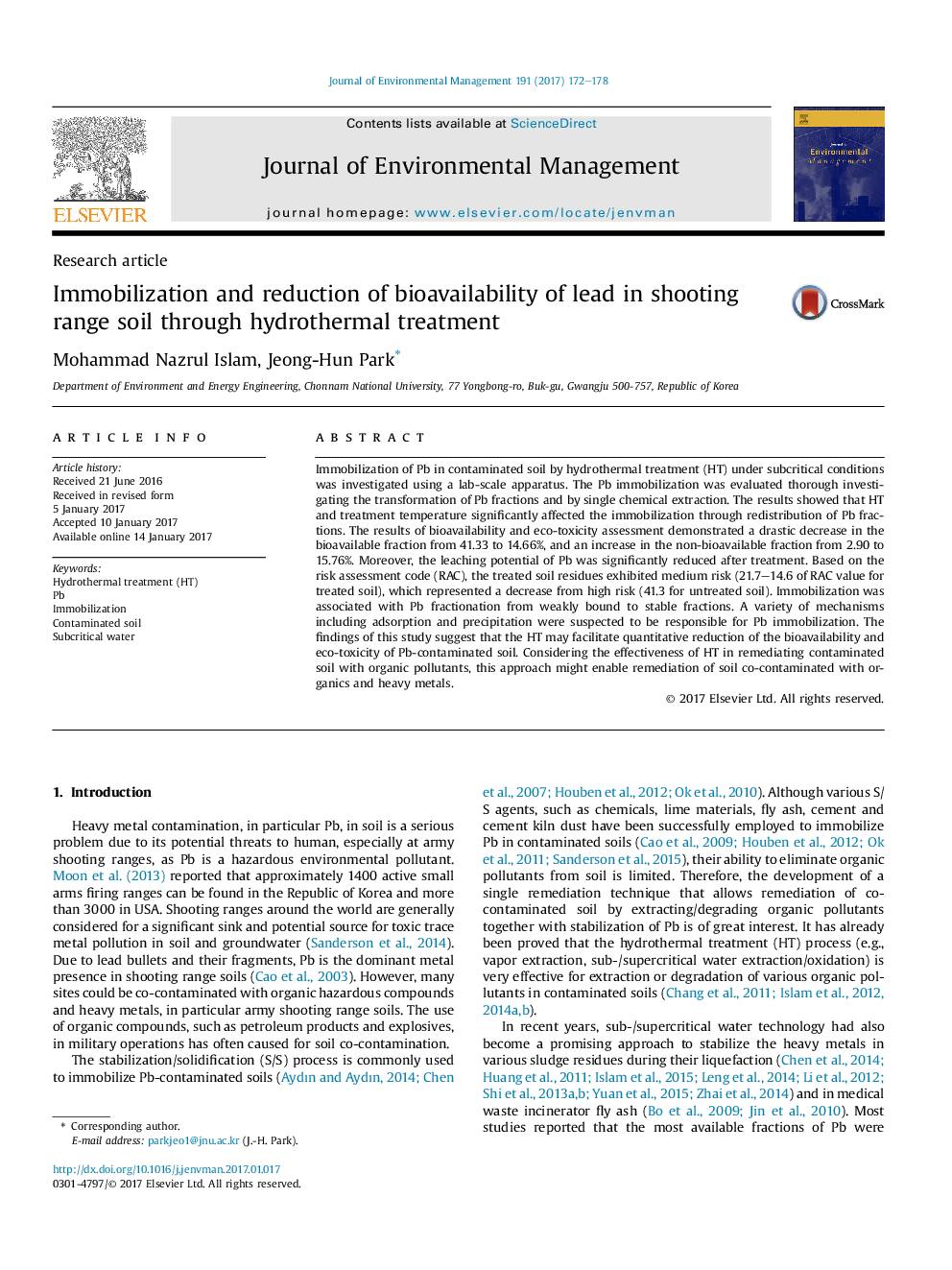| Article ID | Journal | Published Year | Pages | File Type |
|---|---|---|---|---|
| 5116784 | Journal of Environmental Management | 2017 | 7 Pages |
â¢Innovative technique for Pb immobilization in contaminated soil without S/S agents.â¢Subcritical HT process significantly reduced the direct toxicity and bioavailability.â¢Immobilization was associated with Pb fractionation from weakly bound to stable.â¢Environmental risk was mitigated from high to medium risk after treatment.
Immobilization of Pb in contaminated soil by hydrothermal treatment (HT) under subcritical conditions was investigated using a lab-scale apparatus. The Pb immobilization was evaluated thorough investigating the transformation of Pb fractions and by single chemical extraction. The results showed that HT and treatment temperature significantly affected the immobilization through redistribution of Pb fractions. The results of bioavailability and eco-toxicity assessment demonstrated a drastic decrease in the bioavailable fraction from 41.33 to 14.66%, and an increase in the non-bioavailable fraction from 2.90 to 15.76%. Moreover, the leaching potential of Pb was significantly reduced after treatment. Based on the risk assessment code (RAC), the treated soil residues exhibited medium risk (21.7-14.6 of RAC value for treated soil), which represented a decrease from high risk (41.3 for untreated soil). Immobilization was associated with Pb fractionation from weakly bound to stable fractions. A variety of mechanisms including adsorption and precipitation were suspected to be responsible for Pb immobilization. The findings of this study suggest that the HT may facilitate quantitative reduction of the bioavailability and eco-toxicity of Pb-contaminated soil. Considering the effectiveness of HT in remediating contaminated soil with organic pollutants, this approach might enable remediation of soil co-contaminated with organics and heavy metals.
Graphical abstractDownload high-res image (236KB)Download full-size image
